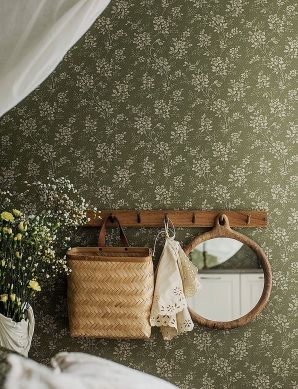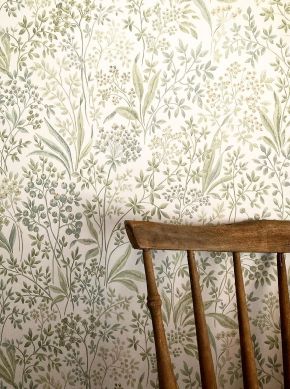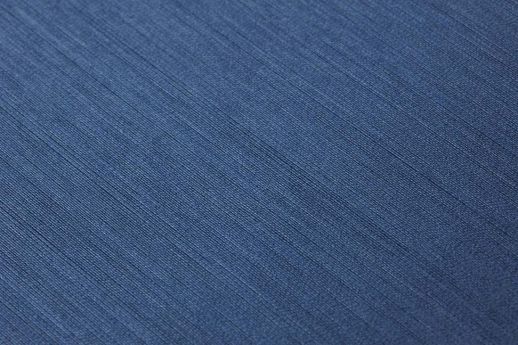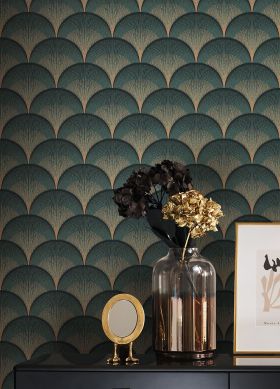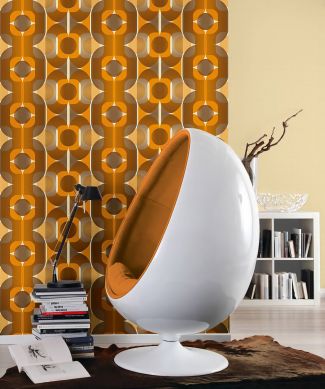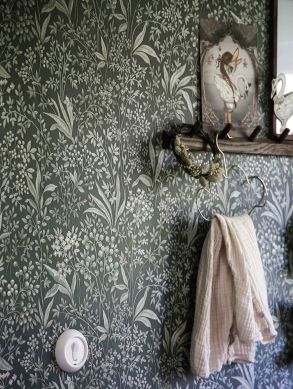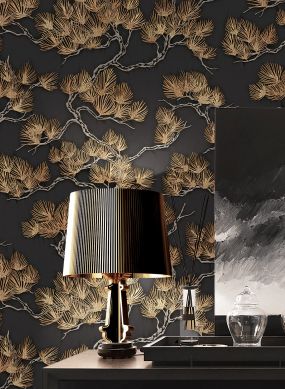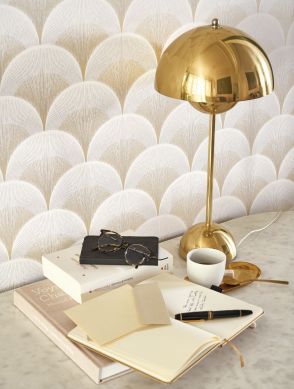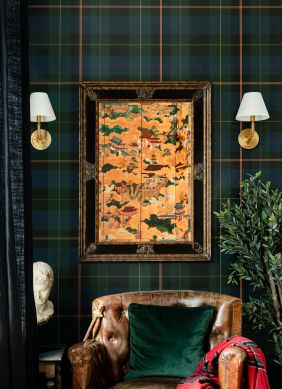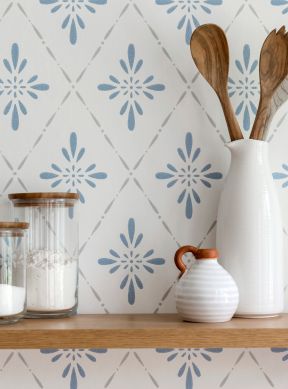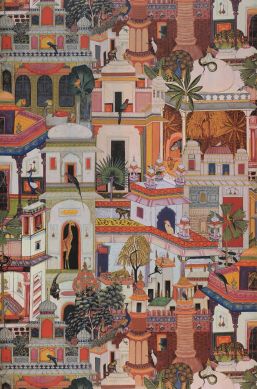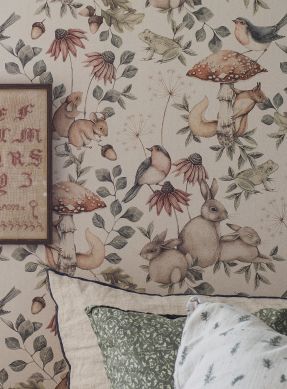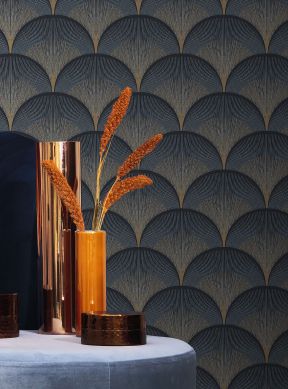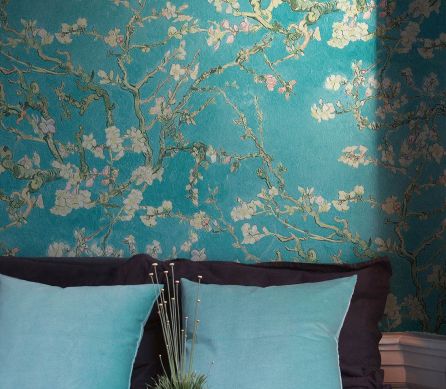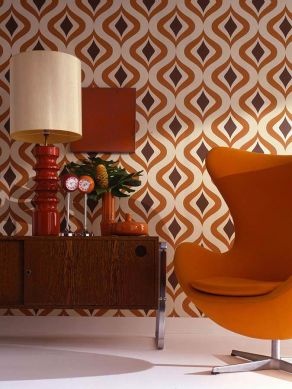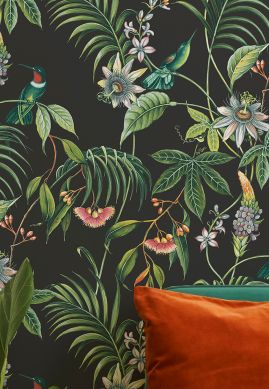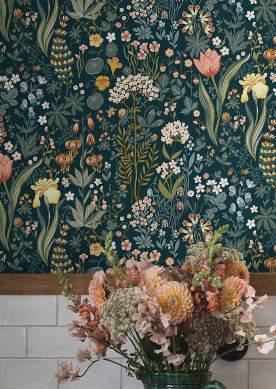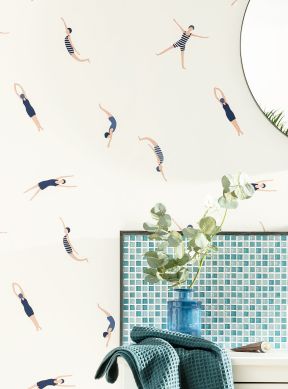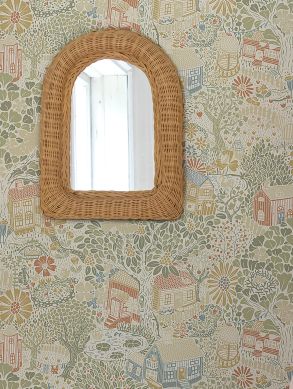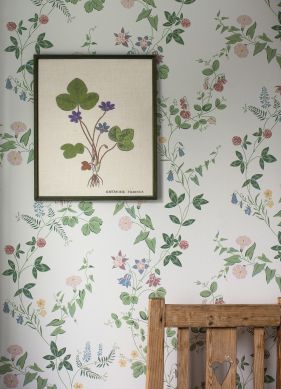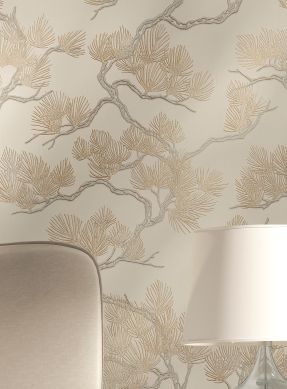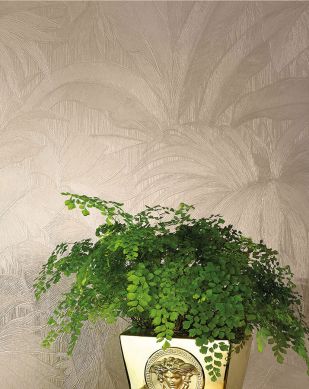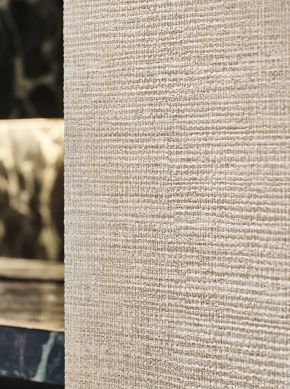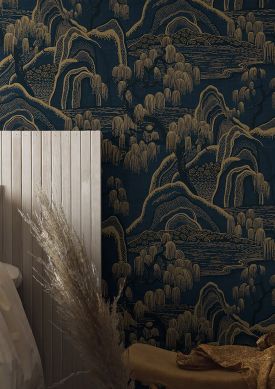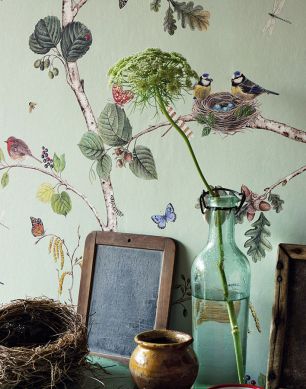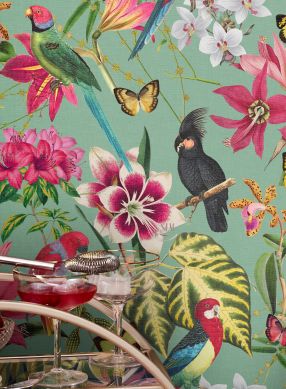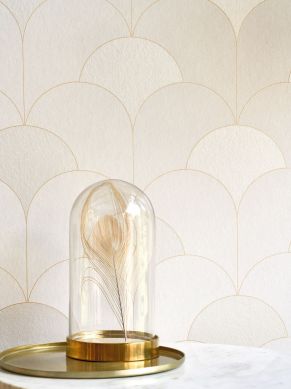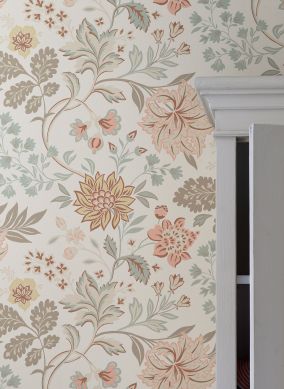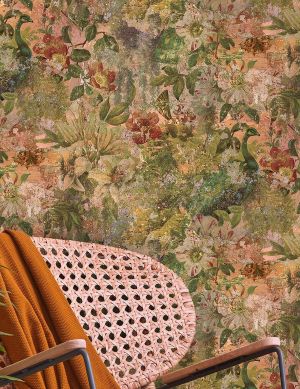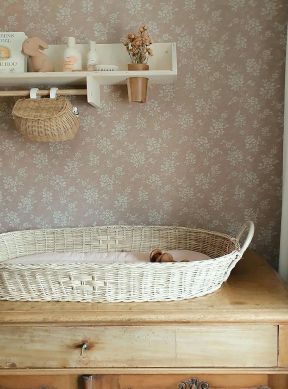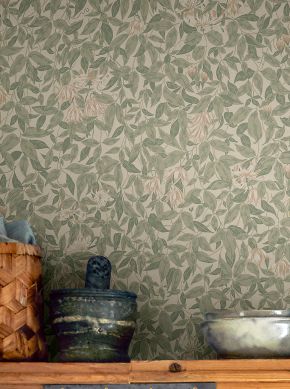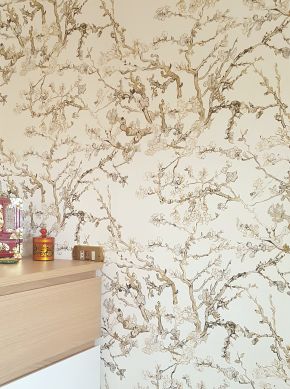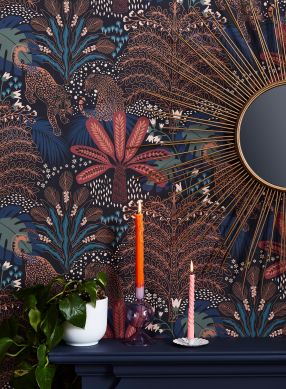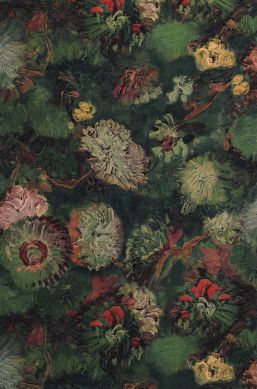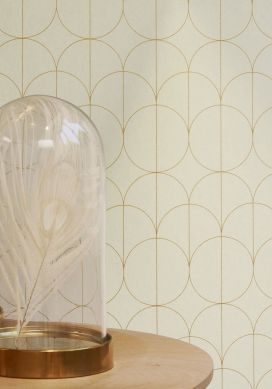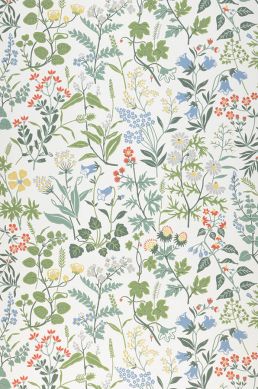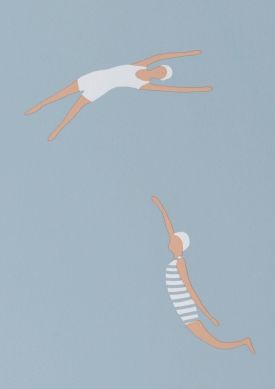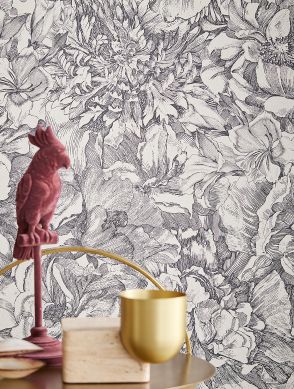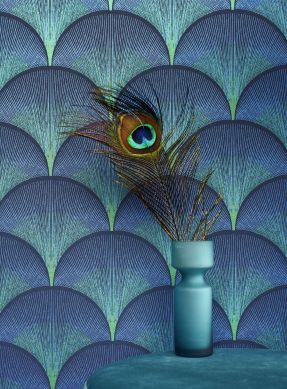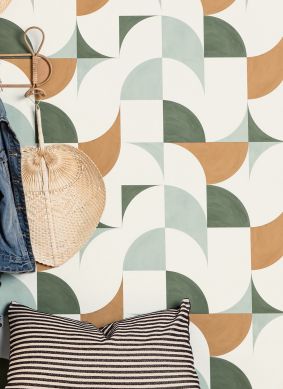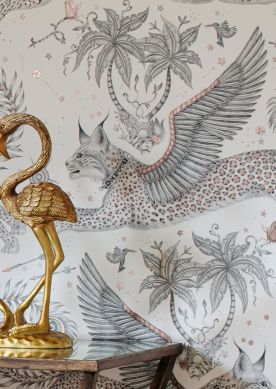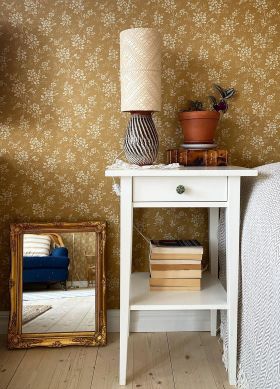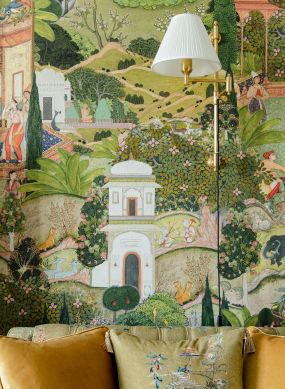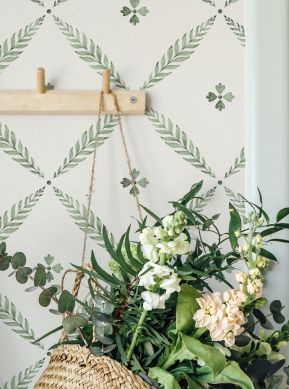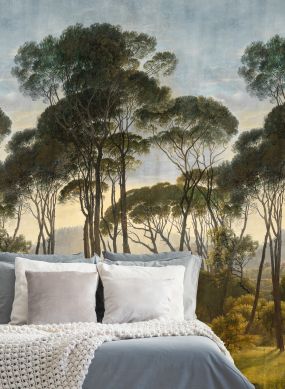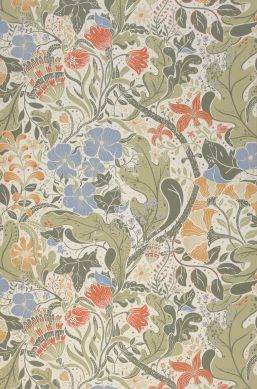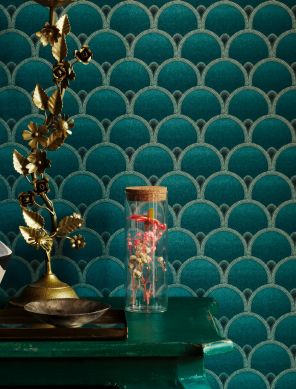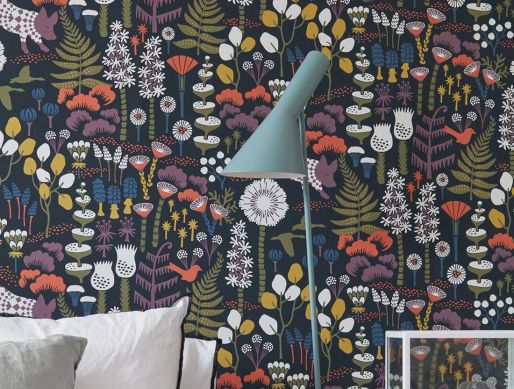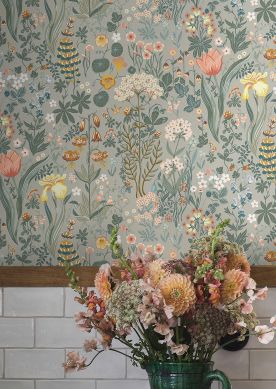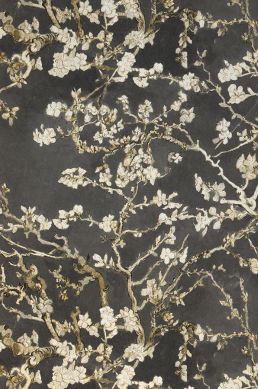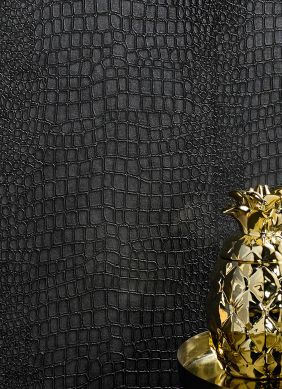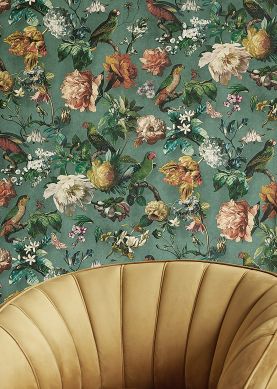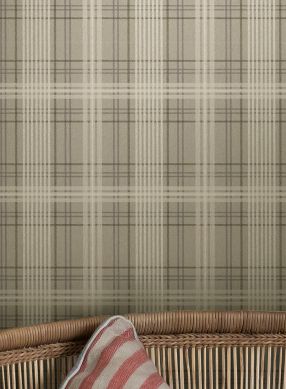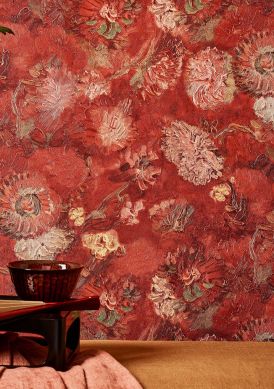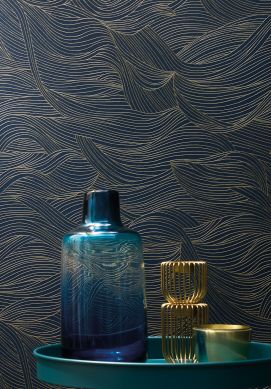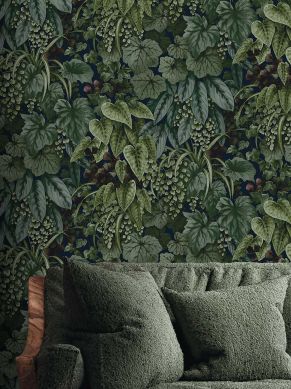Non-woven Wallpaper
Non-woven wallpaper - the Guide
In the 1990s, the numerous advantages of non-woven wallpaper took the market and the hearts of customers by storm. It is dimensionally stable, hard-wearing, washable, very easy to apply (using the straight-forward paste the wall technique) and can be simply pulled off in a dry state once the time comes to remove it. Designers also appreciate the advantages of non-woven wallpaper and create styles that are enchanting, seductive, touching and provoking. A variety of patterns and motifs as well as surface structures, finishes or coatings make non-woven wallpaper a fabulous decorative element for private, commercial and public spaces.
Table of Contents
- What is non-woven wallpaper?
- What are the advantages of non-woven wallpapers over paper-based models?
- What does non-woven wallpaper consist of (in detail)?
- Which non-woven wallpaper types are best?
- Can non-woven wallpaper be harmful in any way?
- What is the difference between vinyl wallpaper and non-woven wallpaper?
- What should be considered when applying non-woven wallpaper?
- Which paste/adhesive (and how much of it) should be used for non-woven wallpaper?
- What should be considered when painting non-woven wallpaper?
- How should non-woven wallpaper be disposed of in an environmentally friendly manner?
- Which companies produce the material for non-woven wallpaper?
- Our tips: Clever ideas for non-woven wallpaper
What is non-woven wallpaper?
Non-woven wallpaper has been a firm favourite on the wallpaper market since the 1990s. The compacted mixture of cellulose and polyester fibres offers very good dimensional stability and is highly resistant to mould growth.
Mixture of cellulose and polyester fibres
The mixture of cellulose and polyester fibres, i.e. natural and synthetic fibres, is known as "non-woven material". This revolutionary wallpaper material was launched on the market at the beginning of the 1990s. Pulp or cellulose is obtained from chemically treated plant fibres. Polyester is a synthetic fibre which is of great importance in the textile industry.
Dimensional stability due to compaction
During the production process of non-woven wallpapers, natural and synthetic fibres are compacted with binders which results in very good dimensional stability. Both types of fibre merge to form a tear-resistant, stable unit which is nevertheless breathable. The compaction process also ensures that the individual lengths or strips of wallpaper do not expand due to the moisture of the paste, nor does the length (or strip) of wallpaper contract when it dries.
High resistance to mould growth
The combination of cellulose and synthetic textile fibres is resistant to moisture and offers good protection from mould growth. This fact was one of the main reasons for the development of innovative non-woven wallpaper at the time. Thanks to this characteristic, moisture is not trapped between the paper and the wall (which could lead to mould). Instead, it can circulate freely.
What are the advantages of non-woven wallpapers over paper-based models?
Non-woven wallpaper models are easy to put up, especially as soaking times are avoided. In addition, non-woven wallpapers are breathable, highly durable, have low flammability, are easy to clean and remove, and light-resistant.
No soaking times required
Many steps that are necessary with paper-based models are completely eliminated with non-woven wallpapers. A trestle table is not necessarily required. Pasting individual lengths of wallpaper and observing soaking times are completely avoided with these wallpaper types. The adhesive is applied directly to the wall. Thus, non-woven wallpapers are easy and uncomplicated to work with, even for beginners.
Breathable
Non-woven wallpaper is air- and steam-permeable and can therefore also be used in damp areas and wet rooms. These properties prevent mould and keep the room climate at a healthy level.
Very robust
The high quality resulting from the basic materials and compaction processes makes non-woven wallpaper very hard-wearing and tear-resistant. Small cracks can be covered, making repair or filling work unnecessary (time and material savings!). The non-woven structure also acts like a reinforcing fabric to prevent cracking.
Low flammability
In residential, commercial and public spaces, fire protection is essential. The better the wall covering is protected against fire, the better the fire prevention effect. Non-woven wallpapers are usually flame retardant ("low flammability"). A special finish considerably delays the ignition of flames. Therefore non-woven wallpapers are also eminently suitable for buildings with public access.
Easy to clean
Non-woven wallpapers have a washable surface that allows easy cleaning if certain types of stains occur. Dirt and some water-soluble stains can be carefully removed with a cloth and lukewarm soapy water. On the other hand, oils, fats and stains containing solvents cannot be removed from washable surfaces.
Easy to remove
When it comes to removing non-woven wallpaper types, they do not require any prep work such as soaking or perforating with a spiked roller. Instead, complete lengths can be removed in a dry state. Usually no residue remains on the substrate, so that new wallpaper can be applied directly.
Light-resistant
A further advantage that should not be underestimated is the good light resistance of non-woven wallpaper. This means that these models retain their colours, i.e. colours do not fade. This also makes these wallpapers much more versatile as direct, permanent sunlight has no impact on the visual effect.
What does non-woven wallpaper consist of (in detail)?
Non-woven wallpapers consist of several components. In addition to cellulose and synthetic fibres, they contain acrylic polymer, fillers, sometimes also preservatives and fungicides.
Cellulose
At about 40-85%, cellulose is the biggest component of non-woven wallpaper. The raw material of cellulose is industrial or plantation wood which is shredded and chemically broken down. In terms of quality, the main distinction can be made between softwood and hardwood pulp. Bamboo and straw are also sometimes used as raw materials.
Synthetic fibres
Synthetic (man-made) fibres account for about 15-30% of non-woven wallpaper materials. Polyester, polyamide and polyacrylic are some of the common synthetic fibres, with polyester fibres being the most frequently used material. Synthetic fibres are produced from coal, crude oil or natural gas in specialised spinning processes.
Acrylic polymer
Acrylic polymers make up a proportion between 0% and 30% of non-woven wallpapers. These synthetic resins serve as binders for the compaction of cellulose and textile fibres. Acrylic polymer is known for its liquid-absorbing properties and makes non-woven wallpapers suitable for wet rooms.
Fillers
Fillers add volume, making the non-woven wallpaper slightly heavier and giving it additional stability. Foams provide more thickness, which, depending on the type, also gives the wallpaper tactile structures.
Preservatives
Non-woven wallpapers can contain preservatives (but they don't necessarily have to). In general, these substances are used to preserve certain colours, finishes and coatings and to protect them from micro-organisms.
Fungicides
Fungicides are anti-fungal agents that reliably kill fungi or their spores. They are available on a chemical or biological basis. For non-woven wallpapers, the purpose of fungicides is to prevent mould and bacteria. These agents are usually integrated in dyes and coatings.
Which non-woven wallpaper types are best?
The grammage and thickness of the material, the type of surface, cellulose from sustainable forestry and water-based printing inks are the main factors that ensure a health-conscious quality.
Grammage and thickness of material
Special characteristics such as processing quality, living comfort, sound and heat insulation or visual effects depend to a large extent on the grammage and material thickness of any non-woven wallpaper. When choosing wallpaper for a specific purpose, the surface weight (g/m2) is a decisive factor.
Smooth or structured surface
The type of surface is primarily of aesthetic importance and as such influenced by individual taste. Elaborate embossing structures create a high-quality visual effect. Smooth surfaces look sophisticated and are easier to paint. Compared to structured surfaces, they require less paint and fewer brush strokes for a great result.
Cellulose from sustainable forestry
Cellulose for non-woven wallpapers is obtained from wood. Wood is an essential material and its environmental protection and resource conservation are essential to ensure that this important raw material will continue to be available in the future. Sustainable forestry (FSC-certified) refers to forests and plantations that are managed according to strict ecological and social principles. For example, only as much wood as can grow back may be taken.
Water-based printing inks for pattern wallpaper
Water-based dyes protect the environment and the health of the population. These light-fast colours consist to almost 50% of water. Binders and colour pigments make up a proportion of 20% each, organic solvents up to 5% and about other agents around 5%. Due to the positive effects on people and the environment, water-based dyes are increasingly used for patterned wallpaper.
Can non-woven wallpaper be harmful in any way?
These days, the use of substances harmful to health is largely avoided or significantly reduced in wallpaper production. Harmful substances such as Phthalate softeners, Organohalogen compounds, dibutyltin and formaldehyde are used extremely rarely.
Phthalate plasticisers Di-isononyl Phthalate (DINP)
Di-isononyl phthalate (DINP) is a mixture of organic-chemical compounds which belongs to the Phthalate group and also serves as a plasticiser for vinyl wallpaper. Phthalates are known for their harmful effects, e.g. on the liver, kidneys and hormone system. Responsible producers now rely on Phthalate-free wallpaper.
Organohalogen compounds
Organohalogen compounds are chemical compounds of bromine, iodine, fluorine and chlorine combined with hydrocarbons as solvents. They can enter non-woven wallpapers via dyes, to name just one example. They accumulate in the environment and are difficult to break down. Unfortunately, they are considered to trigger allergies and some can cause cancer.
Dibutyltin (DBT)
Dibutyltin (DBT) refers to Organotin compounds with two butyl groups. Small amounts of these toxic chemicals can be present in PVC, which is used for vinyl coatings for wallpapers with a non-woven carrier layer. Possible harmful effects on the human organism include skin irritation, irritation of the immune system and dizziness.
Formaldehyde
Formaldehyde is a gaseous chemical compound which, in low concentrations, has a pungent, acidic smell. The substance serves as a basis for other chemical compounds used in the production of paints, varnishes or adhesives. Formaldehyde occurs naturally in wood (cellulose production). However, the quantities measured in non-woven wallpapers are far below the threshold values.
What is the difference between vinyl wallpaper and non-woven wallpaper?
Strictly speaking, all layers of non-woven wallpapers consist of cellulose and textile fibres. The differences between vinyl and non-woven wallpapers are due to the carrier material, the ability to absorb moisture, the cleaning characteristics and the PVC content.
Non-woven wallpaper as a carrier material
If the carrier layer is made of non-woven material and the surface is coated with vinyl, it is usually referred to as vinyl wallpaper, although it is also non-woven wallpaper in the broader sense. In the narrower sense, vinyl is just the surface coating which can also be applied to a paper carrier.
Water-repellent versus washable
Due to its synthetic surface, vinyl wallpaper is water-repellent. In contrast to pure non-woven wallpapers, vinyl wallpaper does not absorb any moisture. These models can be cleaned very thoroughly and are usually scrubbable. Non-woven wallpapers are only washable to a certain extent.
No PVC in non-woven wallpaper
Pure non-woven wallpaper models do not contain PVC. Vinyl, on the other hand, consists of polyvinyl chloride and, as a coating, creates a sealed wallpaper surface that does not allow air or moisture to pass through. Non-woven materials without vinyl coating are air- and steam-permeable, i.e. the wall is not sealed and there is hardly any danger of mould.
What should be considered when applying non-woven wallpaper?
Non-woven wallpaper is easy to apply and just as easy to remove again at a later date. After preparing the surface, the wallpapering paste is applied to the wall directly and the dry strips of wallpaper are then laid onto the paste and pressed on.
Preparing the surface
The surface must be smooth and even, dry, clean and adhesive and has to be prepared with the appropriate thoroughness. With a light-coloured non-woven wallpaper base, the wall surface can be slightly visible, so it should first be treated with a pigmented primer.
Applying wallpaper with the pasting the wall technique
Non-woven wallpapers are put up directly onto the pasted wall (wall-pasting technique). In contrast to paper-based wallpapers, there is no need for pasting the strips or soaking times. This is because non-woven wallpaper neither expands on contact with paste nor contracts again when drying. It is absolutely dimensionally stable.
Paste application with short pile roll
The paste is evenly applied to the wall or ceiling with a short pile paste roller strip by strip. A good amount of paste should be applied slightly wider than the strip of wallpaper to ensure that the edges remain in place. In tricky corners and edges, a narrow paintbrush can be used.
Pressing the dry strips onto the damp adhesive
Each pre-cut, dry wallpaper strip is gently pressed onto the damp adhesive, carefully positioned and unrolled in a downward motion. The first strip is aligned along the plumb line which should be drawn in beforehand. Then a wallpapering brush is used to move any air bubbles from the middle to the sides of the strip of wallpaper. A wallpapering roller and seam roller help to press on the wallpaper and the seams.
Which paste/adhesive (and how much of it) should be used for non-woven wallpaper?
Only specific paste for non-woven wallpaper can be used. It is available in powder form or ready mixed. The quantity depends on the size of the wall. In wet rooms, dispersion paste is added for better adhesion.
Special paste for non-woven wallpaper
Wallpaper paste for non-woven models is clearly labelled as such. It has a slightly viscous consistency and low-splattering qualities. This special paste boasts high initial adhesion so that the dry length stays up immediately but remains movable for a while for possible corrections.
Powder form or ready mixed paste
Paste for non-woven wallpapers is mostly offered in powder form for self-mixing. It is important to observe the correct mixing ratio of powder and water indicated on the package. The instructions also contain information regarding the waiting time (to let the paste develop). Ready-mixed paste for non-woven wallpapers, which is available in cans or buckets, can be used directly from the container.
Paste quantity: depending on the size of the wall
The amount of paste required depends on the wall size. For example, 100 g of powder paste are required for approx. 10 m2 wall surface. Even before buying the paste, the area to be wallpapered should be known in m2 (wall or ceiling) in order to buy the right number of packets of powder or buckets of ready-to-use paste.
Adding dispersion glue
Dispersion adhesives are ready-to-use adhesives based on synthetic resin/plastic with low water content. They solidify when the water evaporates and provide high adhesive strength, making them more difficult to remove. Adding up to 20% dispersion glue to the non-woven wallpaper adhesive is useful in wet rooms so that the wallpaper remains safely on the wall.
What should be considered when painting non-woven wallpaper?
Generally speaking, non-woven wallpaper can always be painted over, although smooth and even models are a better choice. After the non-woven wallpaper has dried for about 12 to 24 hours, paint can evenly be spread over it.
Smooth non-woven wallpapers for painting
Smooth non-woven wallpapers without structures or embossing are best suited for a quick even coat of paint. The amount of paint needed is also significantly lower than for structured non-woven wallpapers, which sometimes have to be painted over several times to achieve the desired finish.
Non-woven wallpaper can be painted over after the required drying time
The wallpaper paste used to apply non-woven wallpaper should be allowed to dry completely before starting to paint the wall. Depending on the season and room temperature, the drying process takes between 12 and 24 hours.
Apply paint evenly
Paint should be applied evenly from top to bottom. This process creates a homogeneous colour finish that is pleasing to the eye. Depending on the type and quality of the paint, the wall might have to be painted a second time to achieve full coverage. Waiting for about 24 hours can prevent the paint from smearing and smudging.
How should non-woven wallpaper be disposed of in an environmentally friendly manner?
The life span of non-woven wallpaper is between 10 and 15 years, after which rooms usually need to be renovated anyway. Since it is not hazardous waste, environmentally friendly disposal is easy and even provides a recycling effect.
Expected life span: 10 - 15 years
Under normal to heavy use, a non-woven wallpaper can last between 10 and 15 years. These days, re-wallpapering or renovations often take place at much shorter intervals. This is not only due to practical or aesthetic reasons, but can also be the result of the desire for change which is obviously not bound to specific times.
Non-hazardous waste
There is no specific recycling option for non-woven wallpapers as they consist of different components. On the other hand, they are not hazardous waste, and as a consequence they can be disposed of in the regular domestic waste bin. This applies to unused surplus wallpaper waste as well as to old removed wallpaper. If there is not enough space in the bin, the wallpaper can be disposed of in additional waste bags which can be bought for a small fee, or at the local recycling centre.
Reuse of energy
Indirectly, the disposed non-woven wallpaper becomes climate-neutral energy through waste incineration. One ton of waste can be used to generate thermal energy equivalent to 250 litres of heating oil. The heat created by the incineration process warms up water until steam is produced which is then pumped through turbines, providing energy for heat converters that in turn generate mechanical energy. Electrical energy is produced by a connected generator.
Which companies produce the material for non-woven wallpaper?
Across the globe, the production of non-woven wallpaper base for the wallpaper industry is carried out by specialised companies. These include Neu Kaliss Spezialpapier, Ahlstrom-Munksjö and Glatfelter.
Neu Kaliss Spezialpapier GmbH, Germany
Neu Kaliss Spezialpapier GmbH is a manufacturer of non-woven and speciality paper based in the German municipality of the same name in Mecklenburg-Vorpommern. It has been part of the Melitta Group since 1992. The history of the company goes back to a paper mill built in 1799. Over the years, this mill developed into a paper factory that focuses on speciality papers and non-woven wallpaper base.
Ahlstrom-Munksjö, Finland
Ahlstrom (timber trading and sawmill operations) and Munksjö (paper mill) were established as independent companies in the mid-19th century in Finland. In 2017, the partners - who had been cooperating since 2013 - merged to form Ahlstrom-Munksjö, the world market leader in fibre-based materials, which also includes non-woven wallpaper base.
Glatfelter, USA
With the purchase of a paper mill in 1864, the foundation stone was laid for the globally acting P.H. Glatfelter Company with headquarters in York, Pennsylvania. The company produces special papers, non-woven materials, packaging materials, hygiene articles and much more from so-called "fibre-based technical materials".
Our tips: Clever ideas for non-woven wallpaper
- Applying non-woven wallpaper on woodchip: Nope - that's definitely not a good idea, so here's a tip on how to get it right. First remove the old woodchip, as non-woven wallpaper cannot stick to it. Prepare the base and then apply the new non-woven wallpaper.
- Saving costs when applying non-woven wallpaper: Even beginners can hang non-woven wallpaper, because the wall-pasting technique makes it so simple, practical and easy. Previous technical knowledge is not necessary. The money saved for a professional painter/decorator can be used to buy some new decorative objects or even furniture.
- Non-woven wallpaper for the ceiling: The wall-pasting technique also has great advantages when it comes to wallpapering the ceiling. Arguments like less effort, quick application and dry removal speak for themselves. Design your room sky with fabulous non-woven pattern wallpapers.
- Healthy living climate for children's rooms: Non-woven wallpaper protects the environment and our health; the breathable non-woven material allows air and moisture to circulate. Countless patterns and motifs are waiting in the children's wallpaper world, and every conceivable theme can be realised easily and without great effort.


